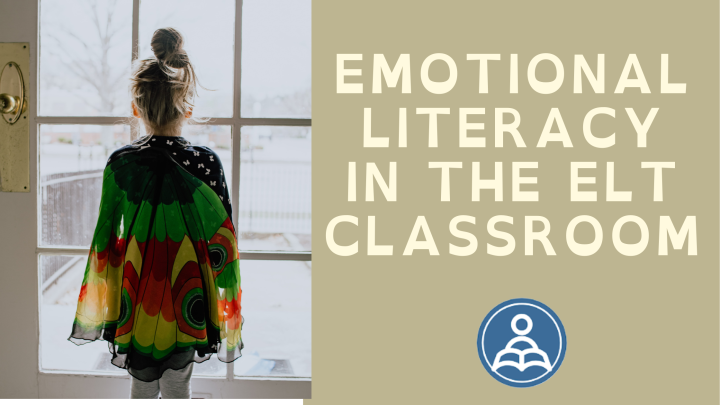
It goes without saying that self-care and well-being have never been so important as in the last year. I marvel at the resilience of the teachers around me and above all the children who are coping so well with the seemingly endless challenges that are being thrown at them. But what is the real effect on our emotional state and how does that affect our ability to learn?
This week I gave a talk at IH Ancona’s ‘Light On’ conference about fostering emotional literacy in the primary classroom. It’s a topic that is close to my heart, not just because of my own VYL classes but also being a mother to two tots and seeing how the past year has impacted their emotional health. What is emotional literacy? It is the ability to recognise, understand and react to our emotions and those of others, something which is crucial in the classroom to construct relationships and for a sense of class community to develop. As teachers, we are aware of the importance of getting our groups to gel quickly and through varied interaction patterns and personalisation of material, we can help to foster this. However, I am still not convinced that we focus enough on the development of our students’ emotional needs.

We forget how our words and actions become indelible memories. I remember clearly as a kid in a playground that you would hear someone saying ‘Sticks and stones may break my bones but words will never harm me”. This riposte to the playground bully’s insults was a mantra that had been repeated by storybooks and parents up and down the country, bolstering the idea that the default position is to hide how we feel and soldier on. In a way this can still be seen today; how do we greet our students? By welcoming them to the class and asking them how they are. To which they respond in an almost identical manner, “I’m fine”, “I’m very well” or at most, “I’m ok”. And we expect this response because it’s the same one that we give day in and day out. Is this because we feel that people don’t really want to know exactly how we are feeling? Do we worry that by offloading our emotions we will be acting in an appropriate manner?
Scientific research has proven the link between high emotional intelligence and academic success and according to research by Raver, C. C., Garner, P. W., & Smith-Donald, R. (2007) children with higher emotional intelligence have increased ability in a range of areas from attention to memory, levels of engagement to the ability to construct new relationships. This would suggest that in order to make a difference in our classrooms we need to develop not only our students’ linguistic tools but also their emotional ones.
So, how can we foster emotional literacy in the classroom? If we want students to be more literate we need to teach them the language of emotions and ensuring we give them opportunities throughout our lessons to forge connections between emotions and their impact on our bodies, minds and relationships. Consciously taking time to explore different emotions in the material we are using will build students’ emotional confidence, allowing them to identify and express the feelings that they are experiencing. Learning about the emotional experiences of others will help students to manage and regulate their own emotions in an environment where they feel comfortable and open enough to share their own feelings.
We are now used to taking our students’ physical temperatures at the start of class so why not check their emotional temperature? At the start of the lesson, you can check in with your students’ emotional state by using an emotional thermometer, asking each student to indicate where they are on a ‘thermometer’ template. This can be an image stuck on a classroom wall or board or if you are working online or in a hybrid environment it can be something like this simple jamboard template. This will give you an instant snapshot of how your class is feeling both on an individual and group level and, perhaps more crucially, it will demonstrate to the students that you have an interest in each and every one of them and their well-being.
Another practical idea that works with young learners is the use of traffic light lollipop sticks. Each student makes three traffic lights which they then keep on their desk throughout lessons and I can check in with how they are feeling. They also double as being a handy tool for formative assessment. Students simply need to hold up the traffic light which reflects their mood/ level of comfort with what we are studying and I can adapt my lesson accordingly.

However you choose to make it work in your lessons, fostering emotional literacy is a crucial part of our role in the language classroom. If we can make our students feel that they are free to express their emotions and work together to be as strong a team as possible then the effect on their learning can only be positive. A group is the sum of its parts and if we strive to make each learner more conscientious of others’ emotions and the effect of their own behaviour, surely we will form stronger bonds with more confident students who will manage their own learning, support one another and therefore grown more empathic. Just a few small steps can help students engage more in their studies and their interpersonal relationships and allow their emotional intelligence to develop. In our current climate, is this really an issue that we can ignore?

Reference
Raver, C. C., Garner, P. W., & Smith-Donald, R. (2007). The roles of emotion regulation and emotion knowledge for children’s academic readiness: Are the links causal?


I simply love your ideas, Olivia. Thanks for sharing!
LikeLiked by 1 person